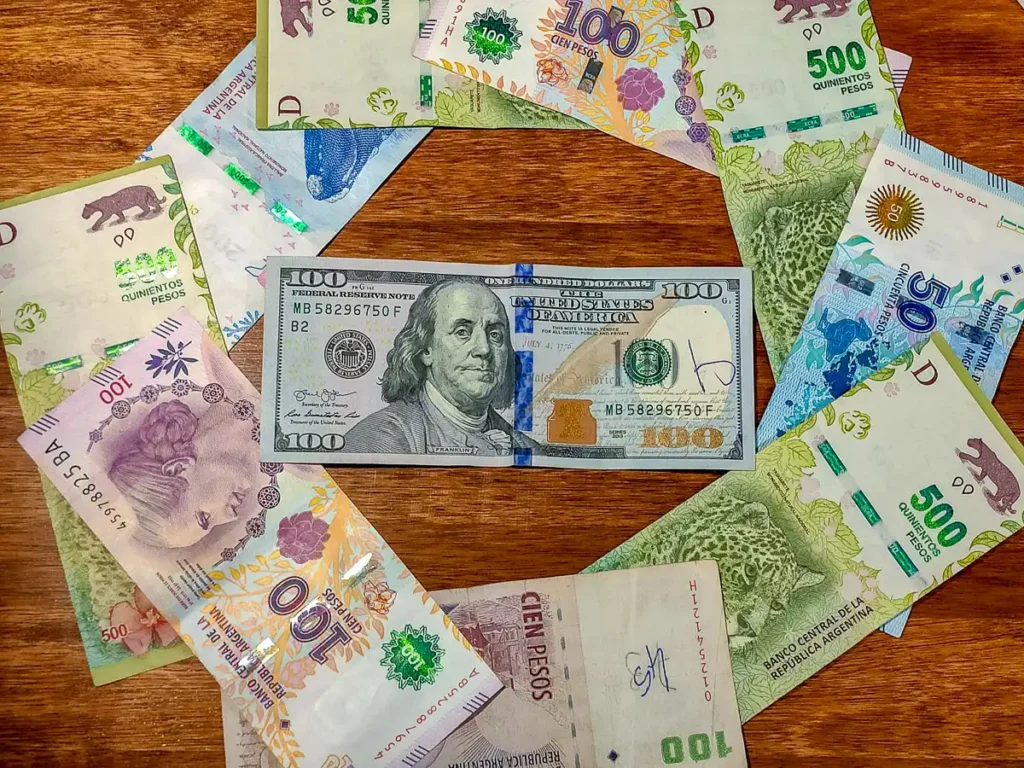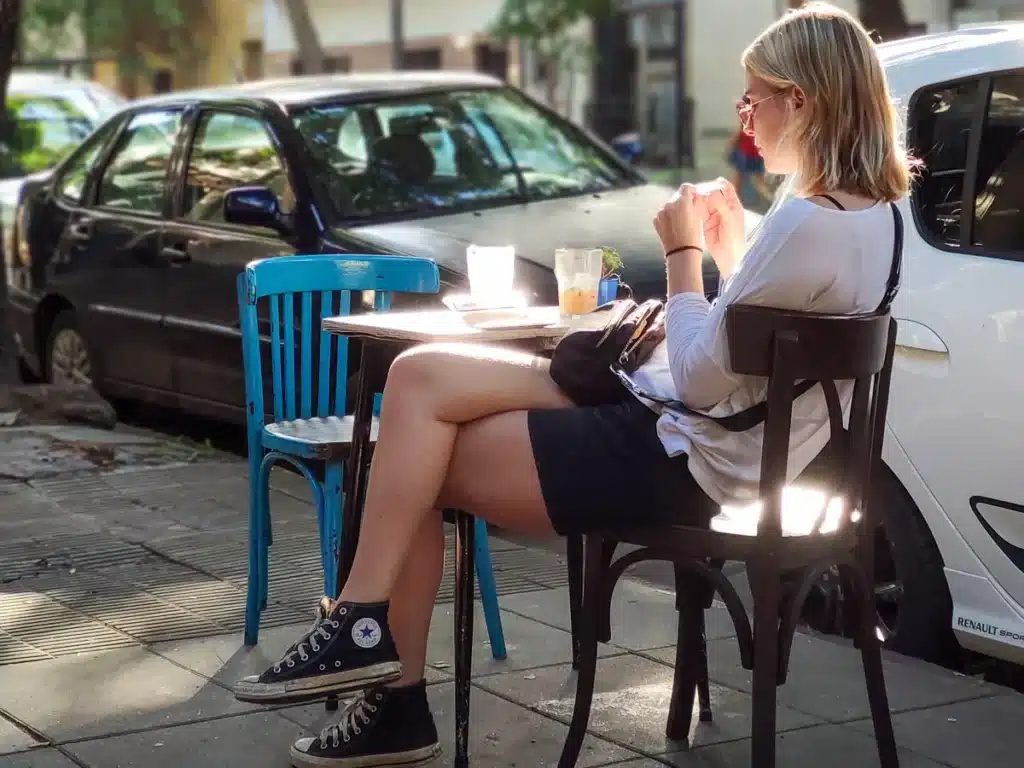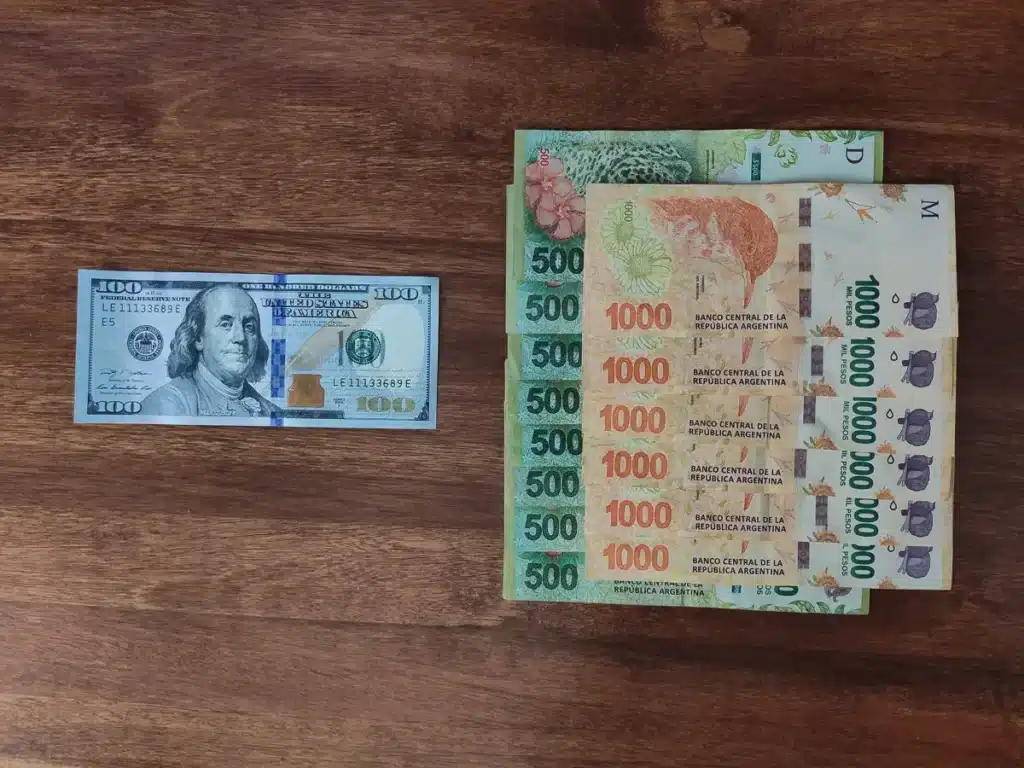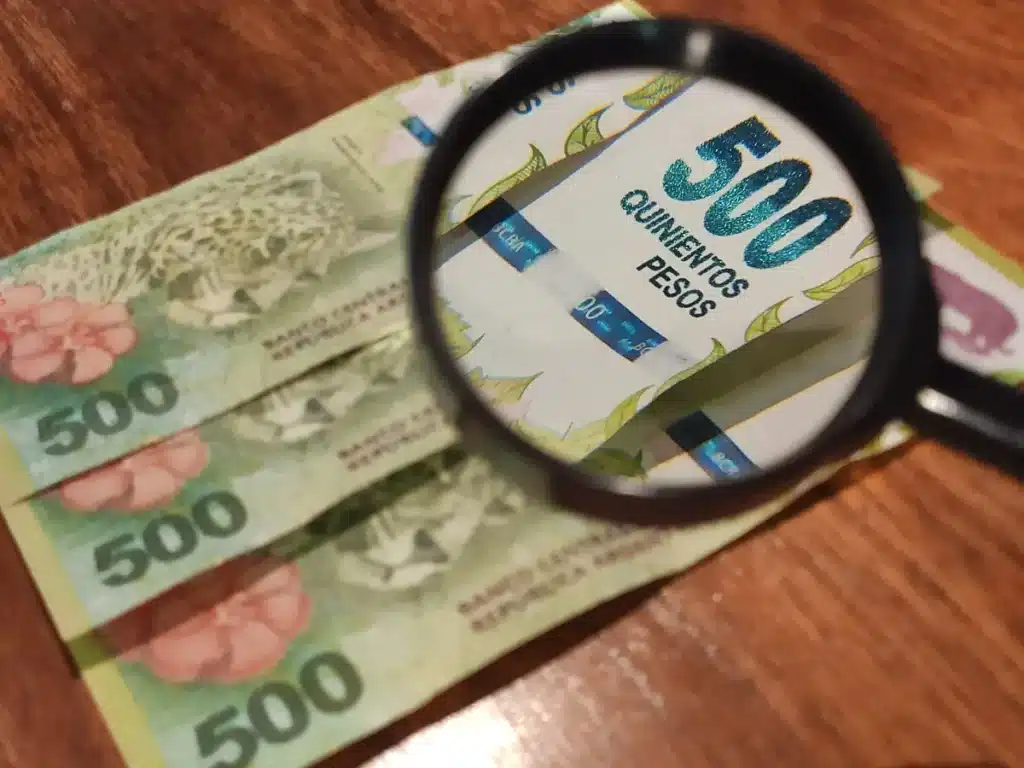We last reviewed this post on October 1st, 2025
Just like mate, tango, and asado, the dólar blue is part of everyday life in Argentina. It may not be as romantic, but it’s just as real—and just as important for your trip.
The golden rule for handling money in Argentina? Stay flexible. Exchange rates move fast, and the best method today may not be the same tomorrow. This 2025 guide explains the dólar blue, dólar MEP, Western Union, and official exchange rate—with three practical strategies to maximize your travel budget.
Table of Contents
What Is the Dólar Blue in Argentina and Why Does It Exist?

The dólar blue is Argentina’s unofficial exchange rate for the U.S. dollar and euros. It exists because the government maintains a fixed official dollar rate that keeps the peso artificially strong. But since pesos lose value quickly, locals and tourists alike turn to the parallel market, where the rate reflects real demand.
Dólar MEP
(Check Today's Rate, click here)
In-store using a Visa/Mastercard (foreign)
The New King. Excellent, safe, and convenient for large purchases.
USD 100 = AR$ 145491 (Oct 2025)
Dólar Blue
(Check Today's Rate, click here)
Exchanging physical USD/Euros (cash)
Still Great. Often the absolute highest rate, essential for cash transactions.
USD 100 = AR$ 1410000 (Oct 2025)
Official Rate
(Check Today's Rate, click here)
ATM withdrawals or official banks
The least favorable rate by far. Avoid using ATMs for cash.
USD 100 = AR$ 132375 (Oct 2025)In Argentina, even the dollar has personalities: the official is polite but useless, the blue is street-smart, and the MEP is your modern, reliable friend.
Exchange rate volatility: During late 2024 and into 2025, the gap between MEP and Blue narrowed, often making card payments the best deal. But the dólar blue can jump overnight—always check the latest exchange rate before deciding.
Strategy 1: Use the Dólar MEP (Credit Cards) in Argentina

For convenience, safety, and avoiding the hassle of carrying wads of cash, the dólar MEP is your best friend.
When you swipe an international Visa or Mastercard in Argentina, your payment is converted at the MEP rate, very close to the dólar blue. Some banks first charge the official rate, then adjust automatically to the MEP rate within a few days. Others process directly at the MEP rate—always check your statement to confirm.
⚠️ One catch: American Express often does not qualify for the preferential rate. Stick to Visa or Mastercard. And remember—many kiosks, taxis, and street vendors still prefer cash.
For more details, see our guide on paying with credit cards in Argentina. CLICK HERE
Strategy 2: Get Pesos in Argentina with Western Union

Western Union has become one of the most popular ways to access pesos in Argentina in 2025. For many travelers, it offers one of the best exchange rates—sometimes even better than the dólar blue.
The process is simple: you use the Western Union app to send money from your home account to yourself in Argentina, then collect the pesos in cash at a branch with your ID.
It’s a safe and practical alternative to carrying large amounts of dollars on the plane. But it does come with quirks. Lines can be long at branches in busy areas—not only downtown, but also in neighborhoods like Palermo or Recoleta. On weekends or right before holidays, branches sometimes run out of cash, which means you might need to return another day.
Tip for travelers: Go early in the day, and if possible, use a larger branch outside the busiest neighborhoods.
Strategy 3: Exchange Cash for the Dólar Blue in Argentina
Even if you rely on cards or Western Union, you’ll still need pesos in hand for tips, taxis, cafés, and cash-only shops. That’s when the dólar blue comes in.
Bring the right bills: To get the best rate, bring clean, crisp $100 USD notes. Older or smaller bills will be accepted, but at a worse rate.
Where to exchange:
- Cuevas (exchange offices): Informal but common in Buenos Aires and other cities. They usually offer the best blue rate.
- Florida Street: The most famous dollar street in Buenos Aires. Walking down Florida, you’ll hear the chorus of “cambio, cambio, dólar, euro”. The street brokers—nicknamed arbolitos (“little trees”)—got their name because they stand still all day “planted” on the street, calling for “green leaves” (your dollars). They may guide you into a small office behind a shop to make the trade. It may feel unusual, but it’s part of the city’s daily rhythm.
- Local advice: Many Airbnb hosts, hotel staff, or tour guides will happily point you toward a trusted place to exchange.
And yes, inflation means you’ll leave with a “brick” of bills. Secure most of it in your hotel safe and carry only what you need for the day.
Concerned about fake pesos? It’s uncommon, but you could check our article on how to spot counterfeit Argentine pesos.
Spending Money in Argentina 2025: Quick Traveler’s Checklist

- Always check the exchange rate daily.
- Use cards (MEP) for hotels, shops, and restaurants.
- Keep cash for small purchases, transport, and discounts.
- Tips should always be in cash—either pesos or dollars. Adding tips to card payments is uncommon, and servers often don’t receive them.
- Avoid ATMs: high fees, low withdrawal limits, and the official rate make them the worst deal.
FAQ: Handling Money in Argentina
Is the dólar blue legal for tourists?
Yes, it’s widely used by locals and foreigners alike. While not the “official” rate, it’s tolerated and part of daily life.
Is it better to use credit cards or cash in Argentina 2025?
Most travelers benefit from a mix: use credit cards for larger expenses at the MEP rate, and keep pesos on hand for taxis, tips, and smaller purchases.
Can I tip in dollars in Argentina?
Yes. The important thing is to tip in cash—whether pesos or dollars. Argentinians appreciate either.
Are ATMs in Argentina a good option?
Not really. They give pesos at the official rate, which is far worse than the MEP or blue, and they charge high fees.
What’s safer: Western Union or dólar blue exchanges?
Both are safe if done correctly. Western Union avoids carrying large amounts of foreign cash, while the dólar blue is quick and accessible if you’re already in Argentina.